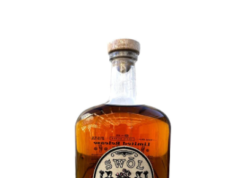Green Rush: The Beverage Business and CBD Part 1 (BevNet)
The green rush has officially arrived.
Once derided as the scourge of America’s youth, cannabis is now being touted as one of the country’s biggest potential cash crops. As of 2018, 18 states and the District of Columbia have legalized medical marijuana use and sales, with a further eight states allowing for recreational use. According to market research from New Frontier Data, the U.S. legal cannabis market, which includes both medical and adult-use sales, was valued at $8.3 billion in 2017 and is projected to grow annually by 14.7 percent through 2025, when it is expected to be worth almost $25 billion. In the first five weeks of 2018, cannabis-based businesses in North America received around $1.23 billion in investment, compared to $178 million in the same period last year.
But this new era of reefer madness goes beyond simply catching a buzz. Within the cannabis market, the non-psychoactive compound cannabidiol, or CBD, has emerged as a major growth driver. Boasting a range of health benefits and, most critically, a degree of legal protection, CBD is helping change the way modern consumers and brands think of cannabis. Having already shown up in a growing spectrum of food and beverage products, the market for legal CBD products is expected to grow to $1.6 billion by 2021, according to cannabis market analysts at The Brightfield Group.
Yet as this new frontier begins to open, the path toward profit is fraught with challenges. In the first part of a two-part series on CBD in beverage, we examine the nature of the compound itself and unravel the complex legality of working with this unique compound.

Function and Usage
As part of the overall movement to legalize medicinal marijuana and explore the therapeutic benefits of cannabis, consumer interest in CBD has increased over the past decade. Yet one of the main obstacles to developing a market for CBD is defining the exact functionality and use occasion those products.
In a larger context, CBD is just one of the over 80 active chemical compounds called cannabinoids that are typically found in cannabis. When these cannabinoids are ingested, they interact — along with other cannabinoids that are produced in the body — with the endocannabinoid system to regulate systemic functions and control the speed of communication between cells.
The information these cannabinoids carry and how the endocannabinoid system translates it is what makes each of them distinct properties. Thetrahydrocannabinol (THC), the most storied of them, is what gives marijuana its psychoactive qualities; when it binds with cannabinoid receptors in the brain, THC can change the way in which the body interprets signals from the brain, resulting in symptoms associated with being “high,” like slowed reaction time, feelings of euphoria or increased appetite.
CBD can be sourced from either marijuana and hemp, which are both varieties of the same species, Cannabis Sativa; the former is known for its psychoactive properties (high THC content), while the latter is grown for industrial applications (low THC content). Sourcing from hemp yields less CBD than sourcing from marijuana, however.
When ingested, CBD can indirectly influence cannabinoid receptors to behave in ways that lead to a wide range of effects that can positively change the body’s response to pain, anxiety, appetite and a number of other factors. Though further scientific research is required, according to the National Institute of Drug Abuse, CBD has also shown potential as a treatment for patients suffering from tumors, anxiety, cancer, Alzheimer’s, stroke and other ailments.
CBD also benefits from “the entourage effect,” which posits that cannabinoid molecules work better when users consume a diverse spectrum of compounds, including THC. Because of the tight regulations on THC, many existing hemp-derived CBD products are made from an isolate or a distillate that is 95 to 99 percent CBD. In contrast, products that contain a blend of other cannabinoids, turpenes, flavonoids and phytonutrients extracted from the entire plant are labeled as “full spectrum.”
“The CBD molecule itself is just CBD, whether you got from cannabis plant that had THC evident inside it or if it was from a hemp plant with little to no THC at all,” said Tim Shaw, COO of MariMed. The company offers a range of management and advisory services for cannabis cultivators, retailers and suppliers. The difference between a CBD isolate and full-spectrum product isn’t the molecule itself, he said, but rather how the presence of other cannabinoids can boost its bioavailability. “It’s not just THC — there are over 140 compounds in [cannabis]. The ratios of them give each ailment a different relief or not.”
Recently, CBD has been increasingly experimented with as a potential treatment for epilepsy and seizures in young children. In May 2017, the New England Journal of Medicine published a double-blind study examining the effects of consuming CBD oil, in combination with other medications, over a 14-week treatment period for children with Dravnet syndrome, a type of childhood epilepsy disorder. Researchers found a 39 percent reduction in the median number of seizures each month; however, they also noted more side effects, including vomiting and fatigue, than the placebo group. Seventeen U.S. states have passed CBD-specific laws that acknowledge the compound as a valid treatment for children suffering from a chronic epileptic condition.
However, CBD is not yet recognized as a dietary supplement by the U.S. Food and Drug Administration (FDA). In April, the FDA, for the first time, recommended a prescription CBD-based medication, the anti-epilepsy drug Epidiolex, for approval in a unanimous decision.
Very extensive article finishes here on BevNet.
$LFER, $NBEV, $TNY, $TNYBF, $WTER




